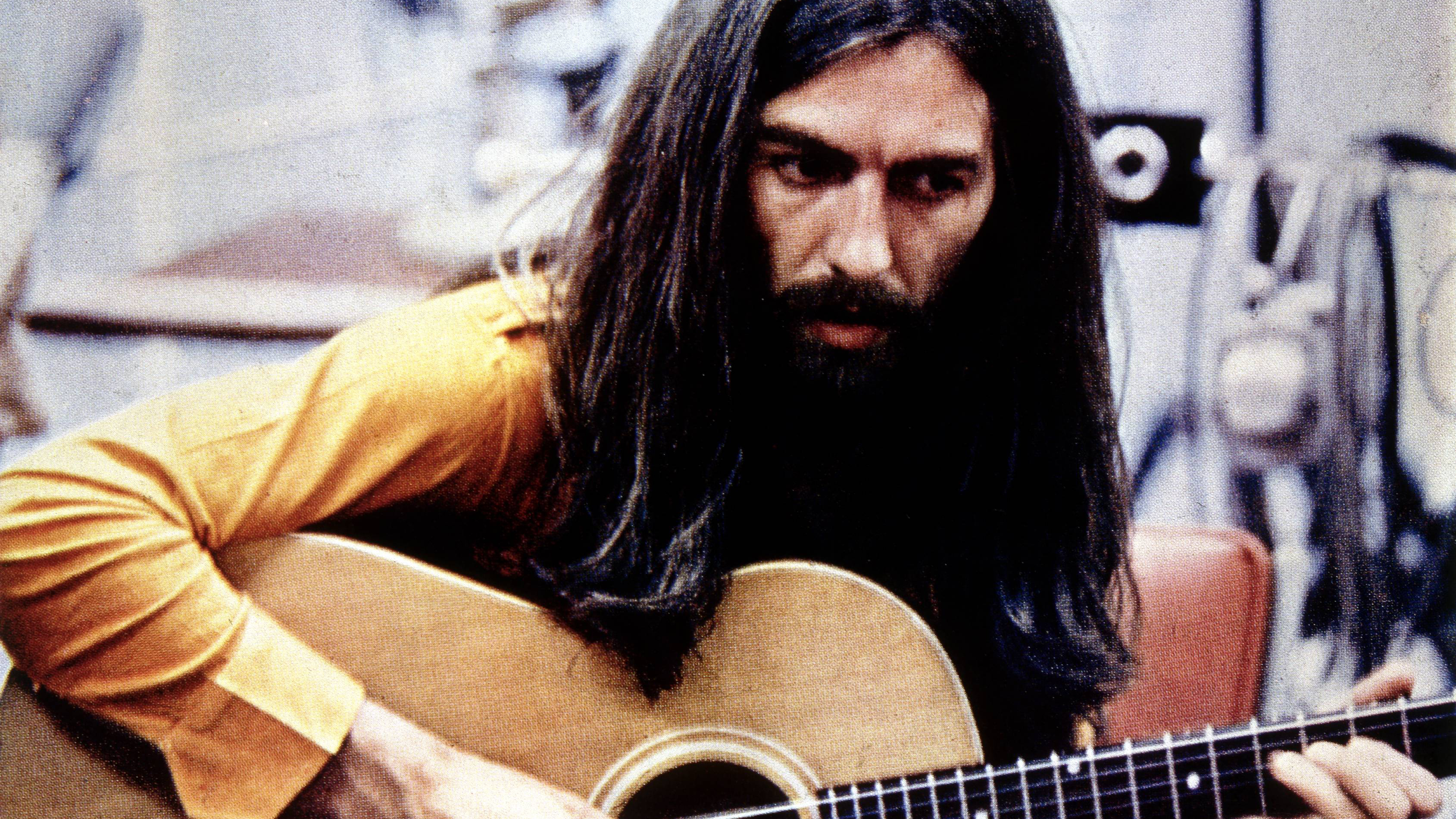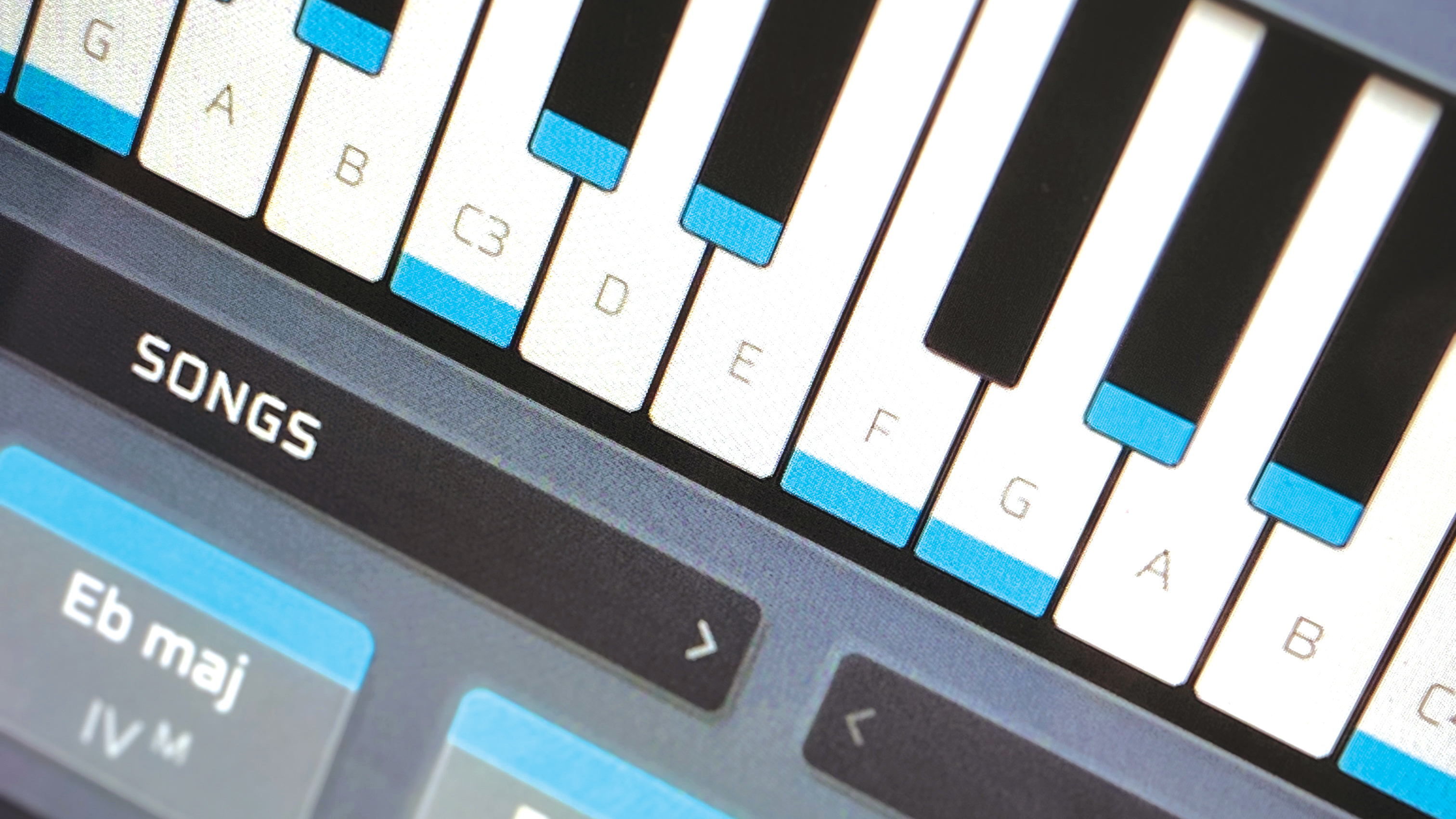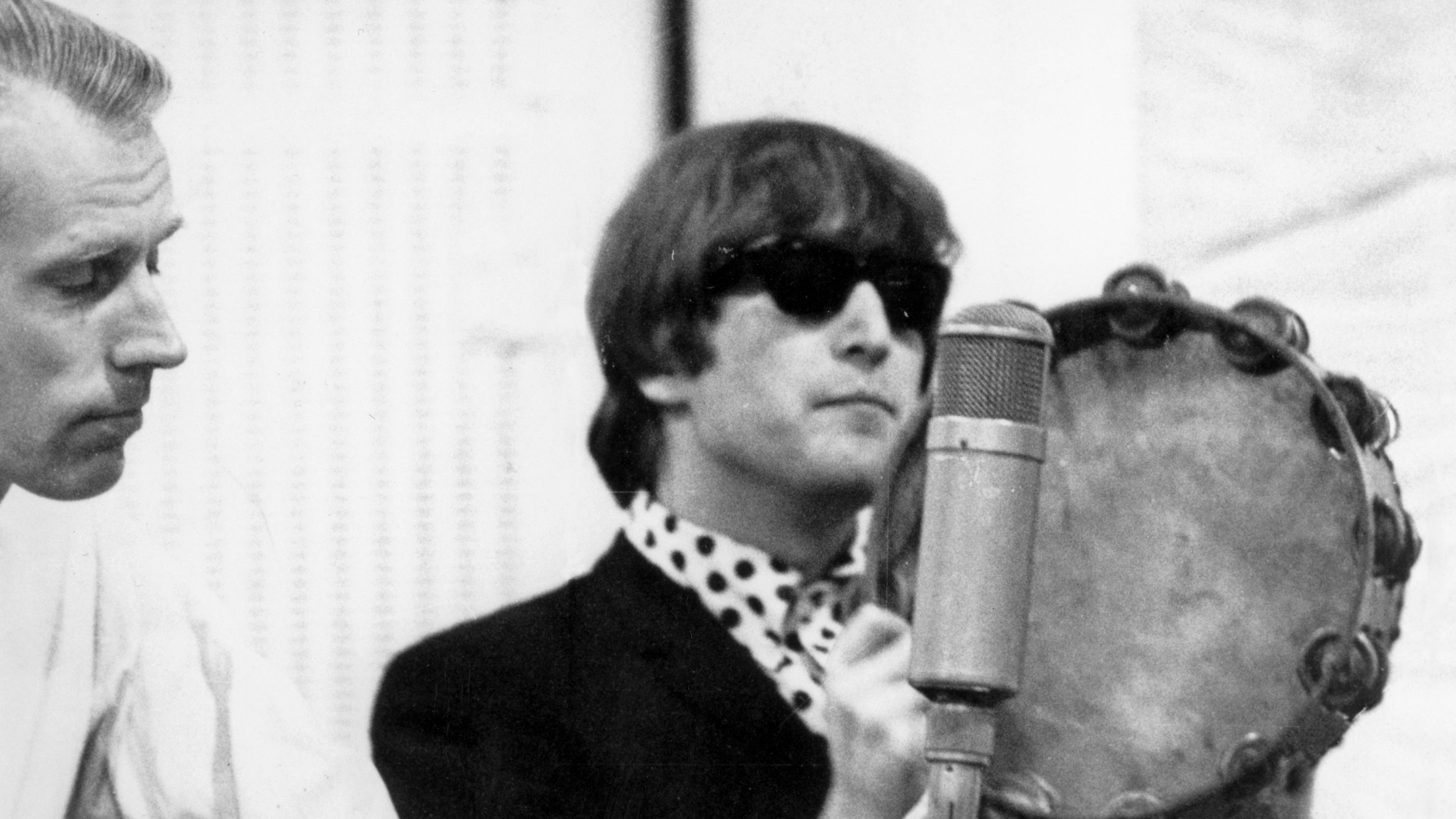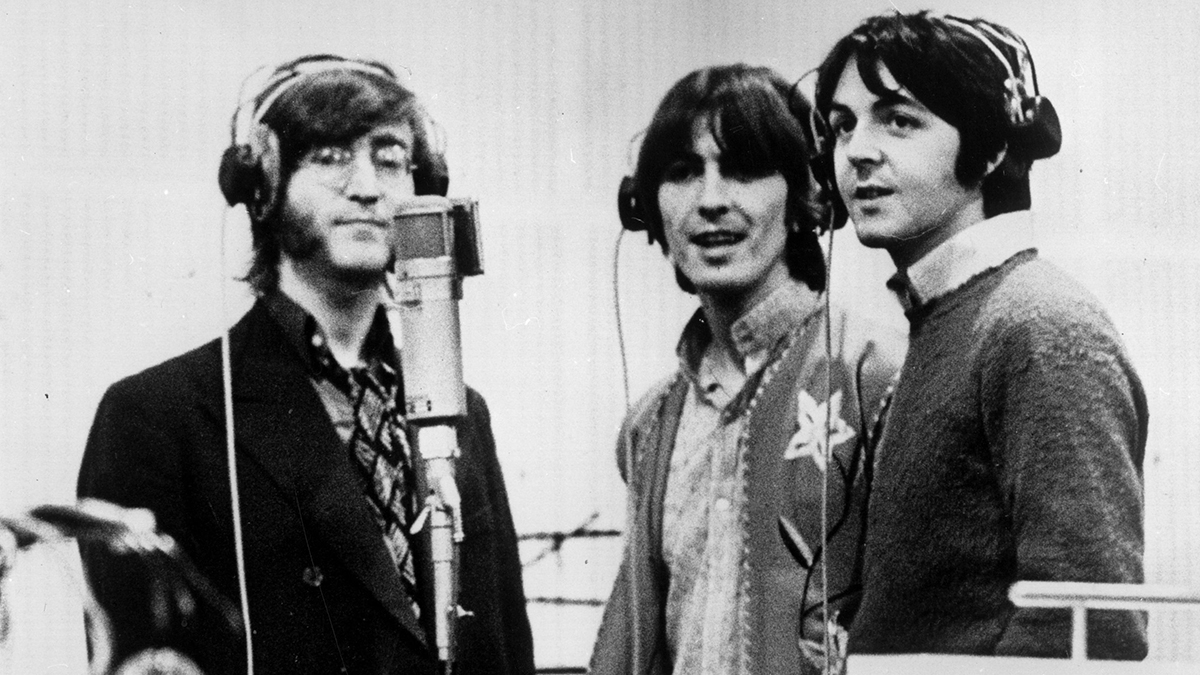Lament bass, varispeed and Eric Clapton: A music professor breaks down the key theory, playing and production ingredients of The Beatles' While My Guitar Gently Weeps
We put one of The Beatles' most beloved tunes under the musical microscope

While My Guitar Gently Weeps is one of the best-loved songs on the White Album and generally considered to be George Harrison’s first real masterpiece as a songwriter.
It’s one of those songs that maybe you get burned out on from overexposure on classic rock radio, but then if you leave it alone for a while and come back to it, you find more intriguing details the more closely you listen. Here’s the 2009 remaster.
George recorded a demo of the song with acoustic guitar and some overdubbed harmonium. It was released on the Beatles Anthology 3. It’s more wistful than dramatic without all the production. George’s original lyrics are a little different too.
Danger Mouse used samples of the White Album recording to make a new backing track for “What More Can I Say” by Jay-Z on his mashup classic The Grey Album.
The song has been covered a thousand times, most memorably by a supergroup at the 2004 Rock and Roll Hall of Fame induction ceremony. Prince’s guitar solo on that performance made a pretty strong case that he was the best rock guitarist in the world.
The lead guitar on the White Album version was famously played by an uncredited Eric Clapton, amid a tense studio atmosphere. You can get a taste for the band’s bickering from the Get Back documentary.
The song itself is about the band’s internal friction after their trip to India, which Harrison experienced as a profound spiritual experience, and which the rest of the Beatles experienced as… a trip to India. This tension is memorably parodied in Walk Hard: The Dewey Cox Story, which, if you haven’t seen it, don’t deprive yourself.
Get the MusicRadar Newsletter
Want all the hottest music and gear news, reviews, deals, features and more, direct to your inbox? Sign up here.
At the time he wrote While My Guitar Gently Weeps, George had been reading the I Ching, and was enthusiastic about the idea that everything is meaningfully connected, that there are no coincidences.
So he decided to write a song by opening a book and using the first words he saw, which were “gently weeps.” When I was a kid, I didn’t know about all the intra-Beatles conflict, and thought that George was singing about the state of the world generally. I was probably partially correct; the song works well either way.
Like most Beatles songs, While My Guitar Gently Weeps is not complicated, but it is nevertheless is full of musical intrigue. Here are the chords to the intro:
| Am | Am/G | Am/F# | F |
| Am | G | D | E |
The verses begin the same way as the intro, but the second time through the phrase, the chords are a little different.
| Am | Am/G | Am/F# | F |
| Am | G | D | E |
| Am | Am/G | Am/F# | F |
| Am | G | C | E |
The intro and verses begin with a common musical trope called lament bass, a bassline that walks slowly downward from the tonic to the fifth. European canonical composers used lament bass constantly. For example, here’s Dido’s Lament by Henry Purcell (1689):
You have heard enough lament bass in classical contexts that when it appears in a rock song, it gives a sense of old-world tragic grandeur. Pre-rock Anglo-American popular music is full of lament bass too. Check out My Funny Valentine by Rodgers and Hart (1937), performed here by Chet Baker:
The Beatles loved lament bass, and used it in several of their songs, including Michelle, Dear Prudence, Lucy in the Sky With Diamonds and Magical Mystery Tour.
In the verses to While My Guitar Gently Weeps, the lament bass runs under the opening two bars, “I look at you all, see the love there that’s sleeping.” In the next two bars, on the lines “while my guitar gently weeps”, the chords move through Am, G, D and E.
This short progression feels like a miniature adventure, because the D chord does not belong to the key of A minor like everything you else have heard until this point. You would naively expect a Dm chord there, which contains the note F. The D chord’s active ingredient is the note F-sharp, the source of the chord’s surprising brightness. (There is also an F-sharp in the lament bass part, but because it’s part of a descent, it doesn’t have that same feeling of temporary uplift.)
The second time through the verse form, George sings “while my guitar gently weeps” in a different melody, over a slightly different chord progression: Am, G, C and E. The C chord sticks out for a different reason than the D chord did the first time.
C is part of the key of A minor, but it’s also the basis of its own key, C major. The G chord is shared between A minor and C major, and it makes a nice logical pivot between the two. You have heard this particular A-minor-to-C-major change uncountably many times. I’ll talk about why it works so well in a minute.
After your brief brief visit to the sunny land of C major, the verse ends on another E, which mentally prepares you to return to Am at the top of the form
After your brief brief visit to the sunny land of C major, the verse ends on another E, which mentally prepares you to return to Am at the top of the form. But no, the song goes into a new section on the line “I don't know why nobody told you.” Most people call this the bridge, though it’s placed where a normal song would have its chorus. Whatever you want to call this section, it’s not in A minor like the verse; it’s in A major instead. This is a much more dramatic shift than the brief visit to C major a minute ago. To understand why, you need to know some music theory.
Picture the white keys on the piano keyboard. They play seven notes, repeated in octaves: A, B, C, D, E, F, and G. If you play these notes over a droning or repeated A, you get the A natural minor scale. But if you play them over a droning or repeated C, you get the C major scale. The scales consist of the same notes in the same order, but changing the starting note changes the notes’ meaning, like the words RESPECT and SPECTRE. When you move from A minor to C major, you aren’t changing any of the notes, just the relationship of those notes to each other. Pretty cool!

Music theory 101: notes, intervals, scales and chords explained
You might also expect the key of A minor to be closely related to the key of A major, because they both center on A. Beyond that similarity, however, the two keys don’t have much overlap. They only share four of seven possible notes in common (A, B, D and E). The relationship between A minor and A major is more like the one between the words RESPECT and REVENGE than the one between RESPECT and SPECTRE. While moving from A minor to C major is so smooth as to sometimes not even be perceptible, moving from A minor to A major feels more disjointed.
Anyway, the bridge stays safely within A major, before plunging you back into the gloom of A minor when it goes back to the verse.
| A | C#m | F#m | C#m |
| Bm | | E E/F# | E/G# E |
For more musicological insights into the tune, check out Alan Pollack’s analysis, part of his epic project to analyze the Beatles’ entire recorded output.
The Beatles recorded While My Guitar Gently Weeps over a few sessions in August and September of 1968. It was one of their first songs to use an eight-track tape recorder. (Everything up until the White Album had been recorded to either two or four tracks. For everything! Can you imagine?) You can read all the details of the sessions in The Complete Beatles Recording Sessions: The Official Story of the Abbey Road years 1962-1970 by Marc Lewisohn.
On the final version of the song, George sings lead (sometimes doubling himself) and plays acoustic guitar and Hammond organ. Paul sings harmony and plays bass and piano. He also takes the unusual step of overdubbing a second layer of fuzzed-out bass. John plays electric guitar with a tremolo effect on it. Ringo plays drums, overdubbed tambourine, and a strange galloping rhythm on castanets. The tempo drifts around between 110 and 120 beats per minute, but Ringo’s halftime drum pattern makes it feel like an incredibly slow 55 to 60.
In an unused early version of the song, George tried one of his trademark backwards guitar solos, but he was dissatisfied by it and didn’t keep it. Instead, he brought in his buddy Eric Clapton to play lead guitar on the finished version. Clapton was concerned that he wouldn’t fit into the band’s sound, and he suggested that they manipulate the tape to make him sound more “Beatle-y”, as he put it.
While the chords to While My Guitar Gently Weeps evoke European classical music, Clapton’s lead guitar comes out of a very different musical tradition: the blues
During mixdown, engineer Chris Thomas made a copy of the lead guitar track and used varispeed to slightly wobble its speed, which also resulted in wobbling of its pitch. This is why Clapton’s guitar sounds vaguely seasick. It sounds like they did a similar varispeed effect on the organ track. The Beatles used varispeed a lot, sometimes to make things higher and brighter (like John’s voice in Lucy in the Sky with Diamonds or Paul’s on When I’m Sixty-Four) and sometimes to make things lower and sludgier (like the entire band on Rain.)
While the chords to While My Guitar Gently Weeps evoke European classical music, Clapton’s lead guitar comes out of a very different musical tradition: the blues. He uses string bends to play pitches in between the piano-key notes, giving the guitar a vocalistic quality.
Clapton plays more simply than usual–his solo on the outro starts by repeating the note E thirteen times–but he uses expressive pitch bends to create emotional intensity. Those thirteen E’s aren’t monotonous because he bends them a slightly different amount every time, so none of them are tuned exactly “right.” I prefer this style of playing to Clapton’s showier stuff, it feels more emotionally direct.

John Lennon's 10 greatest songs with the Beatles and beyond, ranked by you
John Lennon gets a nice blues moment in the song too, right at the beginning of the first bridge. He plays a little guitar fill that ends on C, a note that’s part of the Am chord. But the chord here is A, and the note is supposed to be C-sharp, so John bends the C up toward where it’s supposed to be. Maybe this was intended, or maybe John forgot that the change was coming and reacted to his wrong note in the moment. Either way, it’s very satisfying, because he traverses all the microtonal pitches in between C and C-sharp, and the effect is exquisite.
Covering late Beatles songs is hard. Their musical impact is so dependent on the specific sonic atmosphere the band and their engineers and producers created in the studio, the exact guitar tones, the surreal timbre of slowed down and sped up tape, the odd instrumental touches (castanets!), the layered vocals. Any competent rock band can learn While My Guitar Gently Weeps in ten minutes, but it won’t sound exactly right without all that sonic atmosphere.
To really convey the vibe precisely, you would need two bass players, and someone playing castanets, and a way to create that pitch wobble on the lead guitar and the organ, and on and on. I found the White Album samples on Danger Mouse’s Grey Album exciting because it was such a fresh approach to these holy relics of rock and roll. There are steep legal obstacles to sampling and remixing the Beatles, but I don’t know of a better way to engage creatively with their sounds.


Ethan Hein has a PhD in music education from New York University. He teaches music education, technology, theory and songwriting at NYU, The New School, Montclair State University, and Western Illinois University. As a founding member of the NYU Music Experience Design Lab, Ethan has taken a leadership role in the development of online tools for music learning and expression, most notably the Groove Pizza. Together with Will Kuhn, he is the co-author of Electronic Music School: a Contemporary Approach to Teaching Musical Creativity, published in 2021 by Oxford University Press. Read his full CV here.
MusicRadar deals of the week: I'm feeling this! Score an impressive £350 off the Fender DeLonge Starcaster, as well as hundreds off Epiphone, Gretsch, Gibson and more
MusicRadar deals of the week: Enjoy a mind-blowing $600 off a full-fat Gibson Les Paul, £500 off Kirk Hammett's Epiphone Greeny, and so much more














